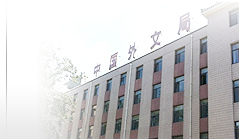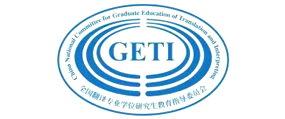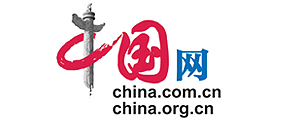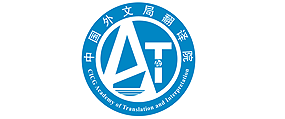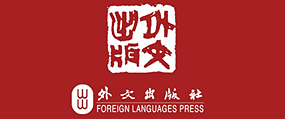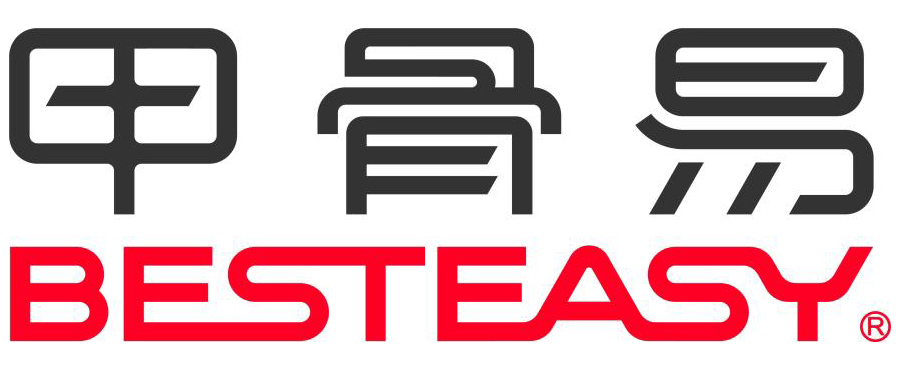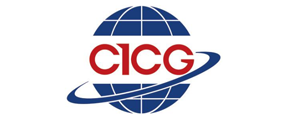发布时间:2020-03-13
《中国关键词:抗击新冠肺炎疫情篇》
Key Words to Understand China: The Fight Against COVID-19
一、中央决策
Decisions by the Central Leadership
1. 疫情防控要坚持全国一盘棋
在2020年2月3日召开的中共中央政治局常委会会议上,习近平指出,疫情防控要坚持全国一盘棋。
坚持全国一盘棋,首先要加强党中央集中统一领导。各级党委和政府必须坚决服从党中央统一指挥、统一协调、统一调度,做到令行禁止。各地区各部门必须增强大局意识和全局观念,坚决服从中央应对疫情工作领导小组及国务院联防联控机制的指挥,采取举措既考虑本地区本领域防控需要,也考虑对重点地区、对全国防控的影响。
疫情发生以来,在以习近平同志为核心的党中央统一领导、统一指挥下,各地区各部门各司其职、协调联动,紧急行动、全力奋战。全国各地调派医务人员,迅速集结、驰援武汉;建设者日夜奋战,迅速建成武汉火神山医院;军队高效投送疫情防控物资,抽调医护人员参加医疗救治;企业加班加点,最大限度生产疫情防控物资供全国统一调度。正如世界卫生组织总干事谭德塞所说,“中方行动速度之快、规模之大,世所罕见”。这充分证明,坚持全国一盘棋,调动各方面积极性,集中力量办大事,是中国打赢疫情防控阻击战的有力保证,彰显了中国国家制度和国家治理体系的显著优势。
Coordinated National Response in Epidemic Prevention and Control
At the meeting held on February 3, 2020 by the Standing Committee of the Political Bureau of the CPC Central Committee, Xi Jinping instructed that there should be a coordinated national response in epidemic prevention and control.
To ensure a coordinated national response, the centralized and unified leadership of the CPC Central Committee must be strengthened. Party committees and governments at all levels must resolutely follow the unified command, coordination and deployment of the CPC Central Committee, and ensure strict enforcement of orders. All localities and government departments must think in big-picture terms and take a holistic perspective, and resolutely obey the command of the Central Leading Group for COVID-19 Prevention and Control and the Joint Prevention and Control Mechanism of the State Council. When devising epidemic control measures, they should take into account both the needs of their areas and sectors and the potential impacts on key regions and the whole nation.
Since the outbreak of the epidemic, under the unified leadership and command of the CPC Central Committee with Xi Jinping at its core, various localities and government departments have performed their duties, coordinated efforts, taken joint actions, and acted promptly with all their strength. A large number of medical workers from all over the country assembled and rushed to the rescue of Wuhan. By working non-stop shifts, thousands of builders raced against the clock and completed the Huoshenshan Hospital in 10 days. The PLA efficiently delivered anti-epidemic materials and dispatched medical personnel to join the rescue. The manufacturers operated at full capacity to maximize the production of materials for national unified distribution.
As WHO Director-General Tedros Adhanom said, “The speed with which China detected the outbreak, isolated the virus, sequenced the genome, and shared it with WHO and the world are very impressive, and beyond words.”
All of these have fully proved that by ensuring a coordinated national response, China can arouse the enthusiasm of all parties and concentrate resources on major initiatives. This forms a strong guarantee for the country to win the war against the novel coronavirus, and also demonstrates great strengths of China’s state institutions and governance system.
2. 确保受赠财物全部及时用于疫情防控
疫情发生以来,湖北和武汉等地陆续收到来自国内外的大量捐赠。为了确保这些捐赠财物及时发挥应有作用,2020年2月5日,习近平在主持召开中央全面依法治国委员会第三次会议时指出,受赠财物必须全部及时用于疫情防控。这一要求,是党中央从立法、执法、司法、守法各环节发力,全面提高依法防控、依法治理能力,为疫情防控工作提供有力法治保障的具体体现。
相关法律规定是贯彻落实这一原则的遵循和依据。比如,按照法律规定,受赠人应当将接受捐赠财物的情况以及受赠财物的使用、管理情况,采取不同方式真实、完整、及时公开信息;对于接受的救助灾害的捐赠财产,应当及时用于救助活动;慈善组织应当积极开展慈善活动,充分、高效运用慈善财产。此外,法律还规定,受赠方要接受政府和社会的监督,在公益慈善活动中违反法律规定的,应当依法承担法律责任。
All Donations to Be Used for Epidemic Control Without Delay
Since the outbreak of the epidemic, Wuhan and other places in Hubei have received a large number of donations from around the world. At a meeting of the Commission for Comprehensive Law-based Governance of the CPC Central Committee on February 5, Xi Jinping pointed out that the donated property must all be used without delay for epidemic control to fulfill the wishes of the kind donors. This reflects the CPC Central Committee’s efforts in enhancing legislation, law enforcement, judicial justice, and observation of the law to provide a strong legal guarantee for epidemic prevention and control.
According to the Chinese law, the donee shall promptly make public the true information about all the donations received and the use and management of the donated property, and distribute the property for disaster relief without delay; and the charities shall use the donation to fund charity activities, fully and efficiently. The law also stipulates that the donee shall be subject to government and public scrutiny, and the law violators in charity activities shall be held accountable.
3. 武汉胜则湖北胜,湖北胜则全国胜
湖北和武汉是疫情防控的重中之重,是打赢疫情防控阻击战的决胜之地。2020年2月10日,习近平在视频连线武汉市重症患者收治医院时指出,武汉胜则湖北胜,湖北胜则全国胜。
疫情发生以来,以习近平同志为核心的党中央始终牵挂湖北和武汉的抗疫工作。习近平两次主持召开中央政治局常委会会议,对疫情防控工作进行专题研究,强调湖北省要把疫情防控工作作为当前的头等大事,并对湖北和武汉做好疫情防控工作作出部署安排。党中央派中央指导组到武汉,全面加强疫情防控第一线工作的指导,同湖北人民和武汉人民并肩作战。全国共有40000多名医务人员驰援湖北,其中驰援武汉的就有35000多名。实践证明,稳住了湖北和武汉的疫情,也就稳住了全国大局。
If Wuhan Wins, Hubei Wins. If Hubei Wins, the Whole Country Wins.
Wuhan and Hubei are the top priorities in China’s epidemic prevention and control, and the main battlefield of the war against the virus. On February 10, in a video call with a hospital in Wuhan which treats severe cases, Xi Jinping pointed out, “If Wuhan wins, Hubei wins. If Hubei wins, the whole country wins.”
Since the outbreak of the epidemic, the CPC Central Committee with Xi Jinping at its core has been concerned about the anti-epidemic work in Hubei and Wuhan. Xi has chaired more than one meeting of the Standing Committee of the Political Bureau of the CPC Central Committee to study and discuss epidemic prevention and control. He emphasized that Hubei must put epidemic prevention and control at the top of the agenda. He also made deployments for Hubei and Wuhan in their combat of the virus.
The CPC Central Committee has sent the Central Guiding Team to Wuhan to comprehensively strengthen guidance on the front line, and to fight side by side with the people of Wuhan and other parts of Hubei province. More than 40,000 medical workers from all over the country came to assist Hubei, about 35,000 of whom worked in Wuhan. Practices have proved that the situation of the whole country will become stabilized if the epidemic in Wuhan and Hubei is put under control.
二、政策部署
Anti-Epidemic Guidelines and Arrangements
1. 集中患者、集中专家、集中资源、集中救治
2020年1月25日,中共中央政治局常委会专题会议强调,要按照“集中患者、集中专家、集中资源、集中救治”的原则,将重症病例集中到综合力量强的定点医疗机构进行救治,同时及时收治所有确诊病人。
集中患者、集中救治,是防控疫情扩散和对确诊患者有效治疗的重要手段。集中患者既可以同步进行医学观察和治疗,方便资源调配,尽早治疗,避免轻症拖成重症,还可以防止正常人群的交叉感染。湖北响应中央要求,对“四类人员”集中收治,精准掌握确诊患者数、疑似患者数、发热门诊有症状患者数、密切接触人员中有症状患者数,以及各医院、隔离点、方舱可用床位数、已用床位数、剩余床位数等,确保动态数据准确无误。
集中专家、集中资源,是应对疫情的重要措施。中央通过从全国调集医疗资源支援武汉重症患者医疗救治,整建制接管新的重症患者收治病区等措施手段,以及在此基础上建立院士巡诊、多学科综合治疗、整体护理等一系列制度,确保重症患者科学救治。
Treating the Infected in Dedicated Facilities by Senior Medical Professionals from All Over the Country and with All Necessary Resources
The meeting held on January 25 by the Standing Committee of the Political Bureau of the CPC Central Committee laid down a guiding principle of “treating the infected in dedicated facilities by senior medical professionals from all over the country and with all necessary resources.” Severe cases must be gathered into designated medical institutions with strong treatment capabilities, and all confirmed cases must be received by hospitals without delay.
Gathering the patients for medical treatment is an important means to prevent the spread of the epidemic and to provide effective treatment to confirmed cases. With the infected people being received in dedicated facilities, medical observation and treatment can be carried out at the same time, which can highly facilitate the allocation of resources. Also, patients can get treatment as early as possible, thus reducing the possibility of deterioration. Plus, gathering the patients together can prevent cross-infection among healthy people.
Following this guiding principle made by the CPC Central Committee, Hubei has gathered the four groups of people: confirmed cases, suspected cases, febrile patients and close contacts. This has made it possible to accurately learn of the number of confirmed cases, suspected cases, symptomatic cases in fever clinics, and symptomatic cases in close contacts. It is also possible to get accurate information about the number of beds available, occupied or vacant in relevant hospitals, isolation centers and temporary treatment centers.
Assembling medical experts and concentrating all necessary resources are important measures to deal with the epidemic. Medical materials from all over the country have been collected to help Wuhan treat severe cases, and new medical institutions in the city that are designated to receive severe patients have been taken over wholly by appointed medical teams. On this basis, an array of working mechanisms such as academician visits, multidisciplinary comprehensive treatment and holistic nursing have been established, ensuring that severe cases can receive science-based treatment.
2.着力做好重点地区疫情防控工作
中共中央政治局常务委员会2020年2月3日召开会议,习近平主持会议并强调,要着力做好重点地区疫情防控工作。只有集中力量把重点地区的疫情控制住了,才能从根本上尽快扭转全国疫情蔓延局面。要重点抓好防治力量的区域统筹,坚决把救治资源和防护资源集中到抗击疫情第一线,优先满足一线医护人员和救治病人需要。
湖北省特别是武汉市等重点地区的疫情防控,是全国疫情防控的重中之重。稳住了湖北疫情,就稳定了全国大局。着力做好重点地区的疫情防控工作,既是广大湖北人民特别是病患和家属的迫切期望,也是防控疫情蔓延扩散的必然要求。
会议指出,湖北省特别是武汉市要进一步完善和加强防控,严格落实早发现、早报告、早隔离、早治疗措施,加强疫情监测,集中救治患者,对所有密切接触人员采取居家医学观察,完善和强化防止疫情向外扩散的措施。各地区要压实地方党委和政府责任,强化社区防控网格化管理,采取更加周密精准、更加管用有效的措施,防止疫情蔓延。做好重点地区疫情防控工作,医治患者是化解存量,防控蔓延是防止增量,这是做好重点地区疫情防控的一套组合拳。
Key Regions: Focus of Epidemic Control
On February 3, the Standing Committee of the Political Bureau of the CPC Central Committee held a meeting to study and discuss the issue of epidemic control. Xi Jinping chaired the meeting and underscored key regions as the focus of epidemic control. Only by concentrating efforts to control the epidemic in key regions can China fundamentally curb the spread of the virus across the country as soon as possible. It is highly necessary to coordinate regional resources, concentrate treatment and protective resources to the front line, and ensure the needs of frontline medical personnel and the patients as a matter of priority.
Hubei province, especially Wuhan and other key regions, are the top priorities of the nationwide war against the novel coronavirus. The situation of the whole country will become stabilized if the epidemic in Wuhan and Hubei is put under control. Making greater efforts to control the epidemic in key regions echoes the urgent wishes of the people in Hubei, especially patients and their families. It is also a must to contain the virus.
The meeting pointed out that Hubei province, especially the city of Wuhan, should further improve and tighten their control, strictly implement the principle of “early detection, early reporting, early isolation and early treatment,” strengthen epidemic monitoring, gather the patients for medical treatment, require all close contacts to stay at home for medical observation, and apply effective measures to prevent the spread of the epidemic.
The meeting required that local Party committees and governments must fully take on their responsibilities, strengthen community grid management, and take more thorough, more targeted and more effective measures to contain the outbreak.
Treating the patients on the one hand and blocking the virus from spreading on the other hand – these two together contribute to effective containment of the epidemic.
3. 全力以赴救治患者,保障医疗防护物资供应
中共中央政治局常委会2020年2月3日召开会议强调,要全力以赴救治患者,保障医疗防护物资供应,努力提高收治率和治愈率、降低感染率和病死率。
全力以赴救治患者,是防控工作的突出任务。会议强调,集中收治医院要尽快建成投入使用,继续根据需要从全国调派医务人员支援武汉,同时保护好医务人员身心健康。要统筹做好人员调配,尽量把精兵强将集中起来、把重症病人集中起来,统一进行救治,及时推广各医院救治重症病人的有效做法。
2月1日,国务院总理李克强赴疫情防控国家重点医疗物资保障调度平台考察时强调,全力保障重点医疗防护物资生产供应,加快医疗防控物资生产、增加供应保障能力,是降低疫情感染患者死亡率、提高治愈率和做好防控工作的必要条件。增加供应就是增强抗击疫情的战斗力,要充分挖掘潜在产能,在保证质量的基础上争分夺秒增加生产,还要创造条件扩大产能。要完善不同场所、不同人群科学使用医疗防控物资的标准,医护工作者战斗在抗击疫情第一线舍己救人,自身也需要防护,重点医疗防控物资首先要保证他们的需要。国务院联防联控机制要加强重点医疗防控物资全国统一调度,各职能部门要齐心协力,对湖北省特别是武汉市等疫情防控重点地区,医疗防控物资要优先保障。
Ensuring Medical Supplies and Treating Patients at All Cost
The Standing Committee of the Political Bureau of the CPC Central Committee emphasized at its meeting on February 3 that the supply of all kinds of medical protective materials must be ensured and no effort shall be spared to treat the patients. It also demanded raising the admission rate and the recovery rate, and lowering the infection rate and the case fatality rate.
Sparing no effort to treat the patients is a prominent task of epidemic control. The central leadership decided at the meeting that more hospitals for collective treatment would be built and put into use as early as possible, and more medical workers from other parts of the country be dispatched to meet Wuhan’s need. They also urged protecting the physical and psychological health of medical workers. They required coordination in the deployment of personnel to concentrate the competent medical workers and gather all severe cases for treatment, and timely promotion of the effective practices of various hospitals in curing severe patients.
When inspecting the national distribution center for major anti-epidemic medical supplies, Premier Li Keqiang called for greater efforts to ensure the production and supply of key medical protective equipment, speed up the manufacturing of anti-epidemic medical supplies, and enhance supply capacity. He said that these efforts together would provide necessary conditions for lowering the mortality rate, raising the recovery rate, and implementing solid prevention and control measures. To increase supply is to enhance fighting capacity against the epidemic, therefore it is a must to fully tap the production potential, to race against the clock to increase output while ensuring quality, and to take possible measures to expand supply.
The premier emphasized improving the standards for appropriate use of anti-epidemic medical supplies in different places and for different groups of people. He said that medical workers fighting at the front line also need protection and they should have priority access to key medical protective equipment.
He required the Joint Prevention and Control Mechanism of the State Council to improve unified distribution of major anti-epidemic medical supplies across the country. All functional departments should make concerted efforts to ensure the supply of medical resources to Hubei province, especially Wuhan and other key regions hit hard by the epidemic.
4.加大科研攻关力度
中共中央政治局常委会2020年2月3日召开会议强调,要加大科研攻关力度,战胜疫病离不开科技支撑。会议指出,要科学论证病毒来源,尽快查明传染源和传播途径,密切跟踪病毒变异情况,及时研究防控策略和措施。要调动高校、科研院所、企业等各方面积极性,组织动员全国科研工作者参与疫情防控方面的科研攻关,推动相关数据和病例资料的开放共享,加快病毒溯源、传播力、传播机理等研究,及时完善防控策略和措施。要加强有效药品和疫苗研发,注重科研攻关与临床、防控实践相结合。要鼓励专家学者增强担当精神、职业责任,在科学研究的前提下多拿出专业意见和建议。
加大科研攻关,直接关系人民身体健康和生命安全。打赢疫情防控攻坚战,加大科研攻关是重要制高点。从解码病毒到疫苗研发,从查明传染源头到切断传播途径,所有工作的开展,都需要秉承科学论证的“方法论”。疫情防控是总体战,加大科研攻关,就是为战胜疫病注入关键性力量。
Reinforcing Scientific R&D Against COVID-19
The Standing Committee of the Political Bureau of the CPC Central Committee at its meeting on February 3 underscored the support of science and technology for defeating the epidemic, and urged reinforcing scientific research in this regard. The meeting highlighted the need to find the origin of the virus, identify the infection source and transmission route as soon as possible, closely track the variation of the virus, and develop prevention and control strategies and measures without delay.
Universities, scientific research institutes and enterprises shall be mobilized, and researchers across the country be organized to join anti-virus research. It is also necessary to promote the sharing of relevant data and medical records, speed up research on the traceability, transmission and transmission mechanism of the virus, and make timely improvements to prevention and control strategies and measures. More efforts are needed to strengthen the development of effective drugs and vaccines, and interaction between scientific research, clinical trials and prevention control practices. Experts and scholars should take on more responsibilities, and come up with more professional proposals and solutions based on scientific research.
Science has a direct bearing on the health and safety of the people, and scientists play a key role in the campaign against the virus. From decoding the coronavirus to vaccine development, from identifying the infection source to cutting off the transmission route, all work must be conducted following scientific methodologies, so as to provide a strong force to win the war against COVID-19.
5. 切实维护正常经济社会秩序
中共中央政治局常委会2020年2月3日召开会议强调,要切实维护正常经济社会秩序。
物资供应充足,市场秩序井然,是确保宏观经济稳定运行的基础。会议指出,要在做好疫情防控的同时,保持生产生活平稳有序,避免因确诊病例增多、生活物资供应紧张等引发群众恐慌,带来次生“灾害”。要确保主副食品生产、流通、供应,确保蔬菜、肉蛋奶、粮食等居民生活必需品供应。要落实“菜篮子”市长负责制,积极组织蔬菜等副食品生产,加强物资调配和市场供应,采取措施保证运送生活必需品的车辆顺利通行。要做好煤电油气重点供应,保障居民用能需求。要加强心理干预和疏导,有针对性地做好人文关怀。
会议指出,要妥善处理疫情防控中出现的各类矛盾和问题,加强社会治安工作,依法严厉打击利用疫情哄抬物价、囤积居奇、趁火打劫等扰乱社会秩序的违法犯罪行为,严厉打击制售假劣药品、医疗器械、医用卫生材料等违法犯罪行为,坚决依法打击各类违法犯罪,维护社会稳定和国家安全。
Maintaining Normal Economic and Social Order
Maintaining normal economic and social order was stressed by the Standing Committee of the Political Bureau of the CPC Central Committee at its meeting on February 3.
Adequate supplies and market order ensures stable operation of the macro-economy. The meeting pointed out that as the nation is fighting the epidemic, it is necessary to maintain social stability and orderly production, so as to avoid public panic and “secondary disasters” caused by the increase of confirmed cases and the shortage of daily necessities.
It is necessary to ensure the production, distribution and supply of staple and non-staple food, and the supply of vegetables, meat, eggs, milk, grain and other daily necessities for residents. City mayors must earnestly fulfill their responsibility of guaranteeing the people’s “vegetable basket” (non-grain food supply), actively organize the production of vegetables and other non-staple food, coordinate the allocation of materials and market supply, and take measures to ensure smooth passage of vehicles transporting daily necessities. Supply of coal, electricity, oil and gas must be maintained to satisfy the energy demand of residents. Psychological intervention and counseling and humanistic care will be provided to those in need.
The meeting also required efforts to properly handle all kinds of difficulties and problems in epidemic control, and maintain law and order. To safeguard social stability and national security, severe punishment will be meted out in accordance with the law on criminal and other illegal offenses such as price gouging, hoarding, speculation and other acts that disturb social order during the outbreak, as well as production and sale of fake and shoddy medicines, medical devices and medical sanitary materials.
三、具体措施
Effective Measures
1. 国务院联防联控工作机制
习近平多次作出重要指示,要求加强联防联控工作,筑牢群防群治的严密防线。2020年1月20日,结合新冠肺炎疫情防控形势,针对春节期间人群流动大的特点,国家卫生健康委召开会议强调,全国卫生系统要健全联防联控工作机制,完善多部门联防联控疫情预案,强化对地方工作的指导和支持。1月21日,中国政府将新冠肺炎疫情防控上升到国家层面,启动国务院应对新型冠状病毒感染的肺炎疫情联防联控机制(简称“国务院联防联控机制”)。
联防联控工作机制是中国政府为防控新冠肺炎疫情作出的一项制度性安排,以疫情防控为中心,打破部门职责的界限,实现疫情防范应对工作的立体化、全覆盖和高效协同。国务院联防联控机制由国卫生健康委牵头,成员单位共32个部门,下设疫情防控、医疗救治、科研攻关、宣传、外事、后勤保障、前方工作等工作组,分别由相关部委负责同志任组长,明确职责,分工协作,形成防控疫情的有效合力。截至2月28日,国务院联防联控机制多次召开新闻发布会,累计印发了30余项通知、技术指引和工作方案文件,介绍疫情防控、物资保障、科研攻关、复工复产等相关工作最新进展,解读政策措施,回应各方关切。
在党中央国务院决策部署下,各省市相继构建联防联控、群防群控体系,依法、科学、有序开展疫情防控工作。
The Joint Prevention and Control Mechanism of the State Council
Xi Jinping has reiterated the importance of society-wide efforts in epidemic prevention and control, and of building a strict line of defense by mobilizing the public.
On January 20, facing the outbreak of the epidemic and considering the large mobility of people during the upcoming Spring Festival break, the NHC proposed setting up a joint anti-epidemic prevention and control mechanism within the national health system, improving inter-agency preparation and coordination, and providing guidance and support to relevant local work.
On January 21, the Chinese government upgraded the joint mechanism to the national level and launched the Joint Prevention and Control Mechanism of the State Council in Response to the Novel Coronavirus Pneumonia (“Joint Prevention and Control Mechanism of the State Council” for short).
The Joint Prevention and Control Mechanism of the State Council is an institutional arrangement made by the Chinese government. Focusing on the mission of epidemic prevention and control, the mechanism breaks down the boundaries of different government departments and agencies and has achieved inter-agency coordination with high efficiency. With the NHC as the coordinator, a total of 32 central government departments cooperate under the mechanism, with internal work teams set up covering epidemic prevention and control, medical treatment, scientific research, publicity, foreign affairs, logistics support, and work at the front line. These work teams are each headed by a leading official of a relevant ministry or commission with clear duties and division of labor. They form strong synergy against the epidemic through close collaboration.
In addition to holding press conferences, the Joint Prevention and Control Mechanism of the State Council had issued more than 30 notices, technical guidelines and work plans by February 28, briefing the public about the latest progress in epidemic prevention and control, material supplies, scientific research and resumption of work and production, interpreting policies and measures, and responding to public concerns.
Following the decisions and deployment of the CPC Central Committee and the State Council, all provinces and cities have established joint prevention and control mechanisms and mechanisms for society-wide efforts against the virus, and taken law-abiding, science-based and orderly measures to fight the epidemic.
2. 武汉“封城”
2020年1月22日,党中央果断要求湖北省对人员外流实施全面严格管控。1月23日,湖北省新冠肺炎疫情防控指挥部指挥长会议通告,1月23日10时起,武汉全市城市公交、地铁、轮渡、长途客运暂停运营;无特殊原因,市民不要离开武汉,机场、火车站离汉通道暂时关闭。为遏制疫情发展,1月25日,武汉市进一步阻断武昌、汉口、汉阳“武汉三镇”之间的公共交通,从1月26日0时起,除经许可的保供运输车、免费交通车、公务用车外,武汉中心城区区域实行机动车禁行管理。
这些“封城”措施,是有效阻断疫情传播、遏制疫情蔓延的必要之举。但“封城”并不意味着“孤城”或“围城”。为确保基本生活不受影响,武汉市新冠肺炎防控指挥部及时通告物资储备和供应情况,呼吁市民不用恐慌,不必囤积;开通24小时电话接收社会各界爱心捐赠,做好物资接收调配工作;紧急征集6000台出租车分配给各社区,为辖区居民出行提供免费服务,解决居家出行不便等问题。
武汉是中国中西部地区的中心城市,是全国重要交通枢纽。“封城”对武汉影响巨大。然而面对疫情,武汉、湖北和中国果断采取了有力措施和行动,做出了巨大努力和牺牲,为全球疫情防控赢得了宝贵时间。
Wuhan in Lockdown
On January 22, 2020, the CPC Central Committee decisively demanded Hubei province implement comprehensive and strict control over personnel outflow.
On January 23, a meeting held by the Epidemic Prevention and Control Headquarter of Wuhan announced that from 10:00 a.m. on January 23, 2020, the city’s urban bus, subway, ferry and long-distance passenger transportation would be suspended, the departure channels of airport and railway stations be temporarily closed, and the citizens should not leave Wuhan without special reason.
To contain the epidemic from further spreading, Wuhan blocked public transportation between Wuchang, Hankou and Hanyang on January 25. From 00:00 on January 26, all non-essential vehicles were banned in downtown Wuhan except for vehicles with permits that are used to guarantee material supply, provide free transportation, and serve public affairs.
These lockdown measures are highly necessary to effectively block the virus and curb the epidemic from spreading. But a lockdown does not mean putting Wuhan out on a limb or leaving it desperately alone. To ensure the citizens’ basic life not be affected much, the Epidemic Prevention and Control Headquarter of Wuhan has made prompt briefings on the city’s material reserves and supplies, and reminded the public that there is no need for panic or hoarding. A 24-hour hotline was opened to receive donations from all walks of life, and solid measures have been taken to receive and deploy the donated properties. A total of 6,000 taxis have been urgently mobilized to serve communities and provide free services for those in need.
Wuhan is a key city in central China and an important transportation hub of the country. The lockdown has yielded a great impact on the city. However, in the face of the epidemic, Wuhan, Hubei and China have resolutely taken effective measures and actions, and by making great efforts and sacrifices, they have bought valuable time for the whole world to fight against the epidemic.
4. 外防输入、内防扩散
新冠肺炎疫情发生时恰逢中国春节返乡高峰,控制新增、防止扩散是疫情防控工作的关键所在。以习近平同志为核心的党中央多次要求各省市采取针对性措施,做到外防输入、内防扩散。这是针对非疫情防控重点地区、人口流动大省大市的一项差异化防控策略。
社区是疫情联防联控的第一线,也是外防输入、内防扩散最有效的防线。通过把好入口关,强化网格化管理,守好社区防控,筑牢安全防线,可以有效切断传染源,控制新增输入性病例,防止疫情扩散蔓延。
疫情防控期间,中共中央国务院还发出了减少人员流动、协同抗击疫情的号召,通过及时延长春节假期,提前部署延迟开学、灵活复工、错峰出行,并在健康监测、人员管理等方面采取严格措施,坚决抓好外防输入、内防扩散两大环节。
Preventing the Coronavirus from Entering and Spreading Within a Region
The outbreak of the COVID-19 epidemic coincides with the home return peak during China’s Spring Festival break. Controlling the number of infections and preventing the spread of the virus is the key to epidemic control. The CPC Central Committee with Xi Jinping at its core has repeatedly urged all provinces and municipalities to take targeted measures and prevent the coronavirus from entering and spreading within the regions under their jurisdiction. This is a differentiated strategy for the regions that are not vital for epidemic prevention and control as well as for the provinces and municipalities with mass transient populations.
The community is the front line of joint prevention and control, and also the most effective line of defense against imported cases and spread from within. By deploying tight check at the entrance and strict grid management, the community can build strong defense and effectively cut off the infection source.
The CPC Central Committee and the State Council also called on the public to refrain from traveling and thus contribute to the epidemic fight. For this end, flexible measures have been adopted in advance such as extending the Spring Festival holiday, postponing the reopening of schools, flexible resumption of work, and staggering the time of return trips of workers. Meanwhile, strict health monitoring and personnel management has been taken to firmly prevent the spread of the virus within a certain region while guarding against imported cases.
4. “一人一方案” “一人一团队”
2020年1月20日,武汉市新冠肺炎疫情防控指挥部工作会议提出,全力做好患者救治工作,对重症患者“一人一方案”“一人一团队”,确保轻症患者尽快治愈出院。
采取“一人一方案”“一人一团队”措施,就是调集一切资源,以最强的技术力量、最佳的护理服务,为患者精准提供医护团队和诊疗方案,开展及时、高效、有针对性的治疗,提高治愈率。全国各地在救治工作中纷纷采用了这一模式。
在疫情形势依然严峻复杂,防控处在最吃劲的关键阶段,采取“一人一方案”“一人一团队”措施是落实“集中患者、集中专家、集中资源、集中救治”要求的具体体现,也是行之有效的救治工作经验。
A Dedicated Team and a Personalized Treatment Plan for Each Patient
On January 20, the Epidemic Prevention and Control Headquarter of Wuhan decided to exert all-out efforts in the treatment of patients. For severe cases, the practice of “a dedicated team and a personalized treatment plan for each patient” will be applied, and mild cases will be cured and discharged as early as possible.
In adopting such a practice, it is highly necessary to mobilize all resources to provide patients customized medical teams and targeted diagnosis and treatment schemes with the strongest technical force and the best nursing service, and carry out timely, efficient and targeted treatment to raise the recovery rate. This practice has been widely adopted in the treatment of patients across the country.
While the epidemic situation is still grim and complex, and prevention and control work is in the most critical stage, this practice complies with the principle of “treating the infected in dedicated facilities by senior medical professionals from all over the country and with all necessary resources.” It has been proved effective in treating the patients.
5. 集中拉网式大排查
2020年2月17日至19日, 武汉市展开集中拉网式大排查, 对各区各街道辖区居民进行筛查甄别,坚持“不落一户、不漏一人”。这是坚持人民生命至上、遵循应收尽收原则的具体举措。
集中拉网式大排查以社区为基础,彻底排查清“四类人员”(即确诊患者、疑似患者、无法排除感染可能的发热患者、确诊患者的密切接触者),推动落实“五个百分之百”工作目标(即确诊患者百分之百应收尽收、疑似患者百分之百核酸检测、发热病人百分之百进行检测、密切接触者百分之百隔离、小区村庄百分之百实行24小时封闭管理)。
这次大排查运用人工智能技术,大大提高了工作效率,在3天时间内完成3300多个社区、村湾近1000万人口的清底排查。在此基础上,通过大数据平台整合归并医院、疾控中心、医保、公安、民政、通信运营商等相关单位的信息数据,对“四类人员”有针对性地开展核酸检测、流行病调查,精准快速地锁定密切接触者,并在第一时间实施隔离,形成了对传染源的有效锁定和有效阻断。
Massive Dragnet Screening of Potential Virus Carriers
From February 17 to 19, Wuhan launched a massive dragnet screening of potential virus carriers among its residents in every community, “leaving no one unscreened.” This follows the belief that “saving lives is of paramount importance,” and the principle of getting all confirmed cases hospitalized for treatment.
This large-scale screening was conducted in search of the four groups of people (i.e. confirmed cases, suspected cases, febrile patients who cannot rule out the possibility of infection, and close contacts), in order to ensure 100 percent of admission for confirmed cases, 100 percent of nucleic acid tests for suspected cases, 100 percent of diagnosis for febrile patients, 100 percent of isolation for close contacts, and 100 percent of 24-hour close-off management of communities and villages.
By the use of AI technology, the investigation was conducted with great efficiency, and reached approximately 10 million people in more than 3,300 communities and villages within three days. Based on the big data platform, the information collected was integrated with the records kept in the hospitals, disease control centers, medical insurance agencies, public security and civil affairs authorities, telecommunication carriers and other relevant units. Targeted nucleic acid tests and epidemiological studies were carried out on the four groups of people, which helped to accurately and rapidly find close contacts and isolate them without delay, therefore effectively identifying and blocking the infection source.
四、专有词汇
About COVID-19
1. 不明原因肺炎
不明原因肺炎,是中国卫生部门为及时发现和处理SARS、人禽流感以及其他传染性肺炎提出的一种医学概念。不明原因肺炎送检需满足四个标准:发热(腋下体温≥38℃);具有肺炎的影像学特征;发病早期白细胞总数降低或正常,或淋巴细胞分类计数减少;经规范抗菌药物治疗3~5天,病情无明显改善或呈进行性加重。
2019年12月以来,武汉出现多例不明原因病毒性肺炎病例。12月31日,武汉市卫健委发布通报称,武汉“不明原因肺炎”病例的临床表现主要为发热,少数病人呼吸困难,胸片呈双肺浸润性病灶,收治患者最早发病时间为2019年12月8日。2020年1月7日,该不明原因肺炎病毒病原体被确定为“新型冠状病毒”。疫情发生后,武汉市迅速采取严厉防控措施,包括病例搜索、隔离、指定医院收治、对密切接触者进行医学观察、应急监测等,并果断实施“早诊断、早隔离、早报告和早治疗”的收治方案。
Pneumonia of Unknown Cause
Pneumonia of unknown cause is a medical term coined by the Chinese health authorities for timely detection and treatment of SARS, human avian influenza and other infectious pneumonia. Patients of pneumonia of unknown cause have the following clinical signs and symptoms: fever (axillary temperature is 38 degrees centigrade or higher), imaging features of pneumonia, decreasing or normal leukocyte count or decreasing lymphocyte count in the early stage of the disease, and no significant improvement or even progressive aggravation after standard anti-microbial treatment for three to five days.
In December 2019, more than one case of viral pneumonia of unknown cause was reported in Wuhan. On December 31, Wuhan Municipal Health Commission announced that the clinical pictures of recent cases of “pneumonia of unknown cause” were mainly fever, and a small number of patients had breathing difficulties and infiltration in both lungs. The earliest onset of the disease was on December 8, 2019. On January 7, 2020, the pathogen of this pneumonia virus was identified as “novel coronavirus.”
After the outbreak of the epidemic, Wuhan quickly took strict prevention and control measures, including case finding, isolation, admission to designated hospitals, medical observation of close contacts, and emergency monitoring. The principle of “early detection, early reporting, early isolation and early treatment” was also resolutely implemented.
2. 病毒检测实验
快速准确地检测到病毒是防控的关键。2019年12月31日,国家卫生健康委高级别专家组赴武汉开展相关检测核实工作,初步确定此次不明原因病毒性肺炎病例的病原体为新型冠状病毒。
国家卫健委随即在全国建立“日报告、零报告”制度,同时下发新冠病毒核酸检测试剂盒,要求各地加强检测,全力救治患者,及时发布确诊病例及疫情防控信息。核酸检测是目前诊断新冠病毒肺炎的主要依据。1月22日,国家卫健委明确指出,核酸检测结果阴性不能排除新冠病毒感染,仍需要考虑可能产生假阴性的各种因素。为遏制疫情发展,国家卫健委向全国各省派出工作组,指导做好疫情防控相关工作。与此同时,中国政府主动向世界卫生组织和有关国家及时通报疫情信息和防控工作进展,第一时间与世界卫生组织共享新冠病毒基因序列。
Viral Infection Test
Rapid and accurate detection of the virus is the key to epidemic prevention and control. On December 31, 2019, the High-level Expert Group of the NHC was dispatched to Wuhan, who soon identified that the pathogen of this particular viral pneumonia case was a novel coronavirus.
The NHC immediately established a “daily report and zero report” mechanism throughout the country, and distributed novel coronavirus nucleic acid testing kits, requiring all localities to reinforce testing, make every effort to treat patients, and update the public about the confirmed cases and progress in epidemic prevention and control without delay. At that time, nucleic acid detection was the main basis for the diagnosis of the novel coronavirus pneumonia.
On January 22, the NHC announced that negative nucleic acid test results cannot rule out novel coronavirus infection, and various factors that may falsely produce negative results still need to be considered.
The NHC also sent work teams to different provinces and equivalent administrative regions to guide epidemic prevention and control efforts.
Meanwhile, the Chinese government took the initiative to inform the WHO and relevant countries of the developments of the epidemic and progress in epidemic control, and immediately shared the gene sequence of the novel coronavirus with the WHO.
3. 新冠病毒成功分离
病毒毒株的分离有助于加快研发快速诊断的试剂,对疫苗研制和药物研发具有重要意义。武汉出现不明原因肺炎病例后,中国政府迅速部署开展病毒分析、检测试剂研发和疫苗研制等工作。
中国疾控中心在接到标本后,3小时获得实时荧光定量检测阳性的检测结果,24小时获得病毒全长基因组序列,2020年1月4日成功研制出高特异性检测试剂,1月7日晚分别从临床样本和环境样本中成功分离病毒,1月24日全球首发第一株新冠病毒毒株信息。之后,钟南山团队从新冠肺炎患者的粪便及尿液标本中分离出新冠病毒,此举对公共卫生安全防控具有重要警示和指导意义。2月24日,中国—世界卫生组织新冠肺炎联合专家考察组召开新闻发布会,称目前新冠病毒宿主仍未确定,强调新冠病毒是一种新的病原体,各年龄段人群均无免疫力,普遍容易感染。
Successful Isolation of a Novel Coronavirus
The isolation of virus strains helps to speed up the development of rapid diagnostic reagents, which is of great significance for the development of vaccines and drugs. After cases of pneumonia by unknown cause occurred in Wuhan, the Chinese government quickly deployed the work of virus analysis, research and development of testing reagents and vaccine development.
After receiving the samples, the Chinese Center for Disease Control and Prevention obtained positive results of real-time fluorescence RPA in 3 hours and full-length genomic sequence of the virus in 24 hours. On January 4, 2020, a high specific detection reagent was successfully developed. On the evening of January 7, a novel coronavirus was successfully isolated from clinical samples and environmental samples, and the information about the first novel coronavirus strain in the world was released on January 24. After that, Zhong Nanshan’s team separated novel coronavirus from the feces and urine samples of confirmed patients, which has an important warning and guiding significance for public health security.
The WHO-China Joint Mission on COVID-19 held a press conference on February 24, and announced that the host of the novel coronavirus has not yet been determined, the novel coronavirus is a new pathogen, and people of all ages have no immunity and are generally susceptible to infection.
4. 启动Ⅰ级响应
根据突发公共卫生事件性质、危害程度、涉及范围,突发公共卫生事件划分为特别重大(Ⅰ级)、重大(Ⅱ级)、较大(Ⅲ级)和一般(Ⅳ级)四级。这次新冠肺炎疫情是新中国成立以来在我国发生的传播速度最快、感染范围最广、防控难度最大的一次突发公共卫生事件。
疫情就是命令,防控就是责任。自2020年1月23日起,武汉城市公交、地铁、轮渡、长途客运暂停运营,机场、火车站离汉通道暂时关闭。1月24日,湖北省正式启动重大突发公共卫生事件Ⅰ级响应。全国先后共有31个省、市、自治区启动“重大突发公共卫生事件Ⅰ级响应”,全面备战新冠肺炎疫情联防联控工作。在Ⅰ级响应发出后,国家卫生健康委要求各地交通运输、民航、铁路等部门制定应急处理预案;财政部与国家卫健委联合制定疫情防控经费有关保障政策。随着疫情防控工作取得阶段性成效,全国疫情形势出现积极向好的趋势。按照“防控生产两不误”的要求,全国多地根据实际情况适当调整应急响应级别。
First-Level Public Health Emergency Response Activated
According to the nature, severity and scope of impact, public health emergencies are classified into four levels (I, II, III and IV), with severity decreasing from Level I to Level IV. The novel coronavirus epidemic is a public health emergency with the fastest spread and the widest range of infections, and has been the most difficult to prevent and control in China since the founding of the People’s Republic in 1949.
“Go where there is epidemic, fight it till it perishes.” On January 23, 2020, Wuhan’s urban bus, subway, ferry and long-distance passenger transportation was all suspended, and the departure channels of airport and railway stations were also temporarily closed.
On January 24, Hubei province officially launched the first-level response to major public health emergency. Across China, a total of 31 provinces, autonomous regions and municipalities directly under the central government took similar actions and made comprehensive preparation for joint prevention and control of the epidemic.
Consequently, the NHC urged transportation, civil aviation, railway and other departments to formulate emergency response plans. It also worked with the Ministry of Finance and jointly devised policies on allocating funds in support of epidemic prevention and control. As phased results are achieved, the overall situation of the epidemic has shown a positive trend in China. To ensure progress with both epidemic control and production, many places have appropriately lowered their emergency response levels according to the local situation.
5. 病死率
病死率是指在一定时期内,因患某种疾病死亡的人或动物数量占患病人或动物总数的比例,用于描述某种特定疾病的严重程度。2020年2月4日,国家卫生健康委宣布,截至2月3日晚24时,新冠肺炎全国病死率控制在2.1%,病死率低于SARS(全球病死率近11%),高于甲流(1%~1.5%)。2月24日晚,中国—世界卫生组织新冠肺炎联合专家考察组在新闻发布会上表示,新冠肺炎的轻症、重症、危重三类患者分别在80%、13%和6%左右,全国病死率约在3%~4%之间,除武汉之外,全国病死率为0.7%;截至2月20日,新冠肺炎确诊病例平均年龄为51岁,80%的病例年龄在30岁至69岁之间,78%的病例来自于湖北。
随着中医药、磷酸氯喹、恢复期血浆治疗纳入诊疗方案,法匹拉韦、瑞德西韦等药物进入临床试验阶段,新冠肺炎治疗不断取得多项进展。科技部副部长徐南平表示,目前正在多路线部署疫苗研发,部分已进入动物试验阶段,最快将于4月下旬申报临床试验。
Case Fatality Rate
The case fatality rate refers to the proportion of people or animals who die from a disease to the total number of patients or animals suffering the disease within a certain period of time, which is used to describe the severity of a particular disease.
On February 4, the NHC announced that by 24:00 of February 3, the case fatality rate of COVID-19 in China had been controlled at 2.1%, which was lower than that of SARS (with a global case fatality rate of 11%) and higher than that of H1N1 (1%-1.5%).
On the evening of February 24, the WHO-China Joint Mission on COVID-19 announced at its news conference that, approximately 80% of laboratory confirmed patients had mild to moderate diseases, 13.8% had severe disease and 6.1% were critical, and the case fatality rate in China was 3% to 4%, 0.7% with the exception of Wuhan; and as of February 20, the median age of confirmed cases was 51, with 80% of cases aged between 30-69 years, and 78% were from Hubei.
With traditional Chinese medicine, chloroquine phosphate, convalescent plasma therapy adopted into the diagnosis and treatment guidelines, and with Favipiravir, Remdesivir and other drugs heading into the phase of clinical research, sustainable progress has been made in the treatment of COVID-19. Xu Nanping, vice minister of science and technology, said that the vaccine is currently being developed in multiple approaches, some of which have entered animal testing phases and will be submitted for clinical trials as early as late April.
6. 世界卫生组织专家组赴武汉考察
2020年1月20日至21日,世界卫生组织首次派出专家组赴武汉实地考察,就病毒传染性、重症病例和传染源等问题同中方进行交流,确认疫情传播途径出现人传人以及医务人员感染。世界卫生组织赞赏中国主动通报疫情信息和分享病毒基因序列,肯定中国政府在短时间内采取的各项有力有效举措,称道中国快速研究和识别新的病毒种类,认可中国近年来在医学研究能力方面的进展。
2月16日起,中国—世界卫生组织新冠肺炎联合专家考察组在北京、广东和四川三地进行考察。专家组集聚全球多个机构的流行病学、病毒学、临床管理、疫情控制和公共卫生等领域权威人士。2月22日,联合专家组赴武汉继续考察,并与中国流行病学专家合作,调查病毒源头,确认病毒是否已经停止从动物向人类传播。
Field Visits of WHO Experts to Wuhan
From January 20 to 21, the WHO sent a team of experts to Wuhan to investigate the outbreak and communicate with their Chinese counterparts about virus infectivity, severe cases and infection source. The WHO experts confirmed human-to-human transmission of the epidemic and infection among medical personnel.
WHO appreciated China’s initiative to report epidemic information and share the genetic sequence of the virus, approved the strong and effective measures taken by the Chinese government in a very short time, and praised China’s rapid research and identification of new types of viruses. It also recognized China’s progress in medical research in recent years.
On February 16, the WHO-China Joint Mission on COVID-19 began their field visits in Beijing, Guangdong and Sichuan. The team brought together authorities from a number of institutions around the world in the fields of epidemiology, virology, clinical management, epidemic control and public health. On February 22, the experts went to Wuhan to continue inspection. They worked with Chinese epidemiologists to investigate the source of the virus and try to confirm whether the virus had stopped spreading from animals to humans.
五、国际援助
International Aid
1. 盖茨夫妇:用慈善拯救世界
1月27日,由比尔·盖茨及其夫人梅琳达共同成立的盖茨基金会,宣布提供500万美元紧急赠款,支持中国抗击疫情。随后,又承诺投入最高1亿美元赠款,用于支持世界卫生组织、中国相关机构以及其他国际和国家层面的相关机构,共同应对新冠病毒疫情,其中一部分用于直接帮助中国加快在药物、疫苗及诊断方法研发等方面的工作。比尔·盖茨专门致信习近平主席,赞赏中国政府和人民在抗击疫情中的表现,表示将坚定支持中国打赢抗疫阻击战。
习近平在2月20日给比尔·盖茨的回信中,感谢他和盖茨基金会对中国防控新冠肺炎疫情工作的支持,呼吁国际社会加强协调、共同抗击疫情。信中指出,人类是一个命运共同体,战胜关乎各国人民安危的疫病,团结合作是最有力的武器;盖茨基金会很早就加入全球抗击新冠肺炎疫情的行动,发挥了积极作用;支持盖茨基金会同中方有关机构的合作,也期待国际社会加强协调,为维护人类健康福祉一起努力。
Bill and Melinda Gates: Saving the World with Charity
On January 27, the Gates Foundation, co-founded by Bill Gates and his wife Melinda, committed $5 million in emergency funds to support China’s fight against the epidemic. Subsequently, the Foundation committed up to $100 million for the global response to the novel coronavirus. The donation will be used to assist the WHO, Chinese frontline responders and others at the global and national levels, part of it will be directed to help China accelerate the development of vaccines, drugs and diagnostics.
Bill Gates sent a special letter to President Xi Jinping, praising the performance of the Chinese government and people in fighting the virus, and expressing his firm support for China to defeat the epidemic.
In his reply to Bill Gates on February 20, Xi Jinping thanked him and the Gates Foundation for their support, and called for enhanced coordination and concerted efforts in the international community to combat the epidemic. Xi also mentioned that, mankind is a community with a shared future, and unity and cooperation is the most powerful weapon to prevail over a disease that threatens all; the Foundation has been quick in joining the global action and has played an active role in the global response against the outbreak; and he supports the Gates Foundation’s cooperation with relevant Chinese institutions, and looks forward to enhanced coordination and concerted efforts in the international community for the sake of health and well-being of all.
2. 韩国:向12城市捐赠物资
2月11日,韩国首尔市政府向北京、重庆等12座城市提供1000套医用防护服、500个护目镜、90个医用防护面罩、30台便携式热成像摄像机等6亿韩元(约合人民币353万元)规模的援助物资,并表示还将视情提供民用口罩等物资,助力中国抗击新冠肺炎疫情。首尔市市长朴元淳专门录制支持视频,感谢北京市在首尔深陷中东呼吸综合征(MERS)疫情之际派遣特使团给予帮助,希望中国能够早日战胜当前困难,期待首尔市与中国友好城市在困境中相濡以沫,不断加深友谊。2月15日起,首尔市政府在市政厅广场等公共建筑、光化门等数个人流密集的地铁站,以及首尔市70多个有关机构的电梯内,滚动播放支持中国抗击新冠肺炎疫情的短视频。在民间,韩国外国语大学挂出“武汉加油、中国加油”的横幅,成均馆大学成均中国研究所捐赠300万韩元,并发出慰问信。据初步统计,韩国政府和民间捐款捐物已超过1.5亿元人民币。韩国总统文在寅表示,韩中互为友好邻邦,中国的困难就是我们的困难,韩国将不遗余力地提供支援和配合,与中国携手战“疫”、共克时艰,推动两国关系进一步发展。
中韩两国面对困难相互支持、相互帮助,反映了两国之间共同共通的文化底蕴、守望相助的友好传统,显示出携手构建人类命运共同体的邻里情、朋友义。
The ROK: Donating Goods to 12 Chinese Cities
On February 11, the Seoul Metropolitan Government of the Republic of Korea (ROK) donated 1,000 sets of medical protective suits, 500 goggles, 90 medical masks, 30 portable thermal imaging cameras and others, with a total value of 600 million won (about 3.53 million yuan), to 12 cities including Beijing and Chongqing. It also said that it would continue to provide masks for civilian use and other materials as appropriate to help China fight against the epidemic.
In a video message, Mayor of Seoul Park Won-soon expressed his thanks to Beijing for sending a special mission to help Seoul when the city was mired in the MERS epidemic. He hoped China could overcome the current difficulties as soon as possible, and looked forward to Seoul and its Chinese sister cities helping each other in the predicament and deepening friendship.
On February 15, the Seoul Metropolitan Government began broadcasting short videos supporting China’s fight against the COVID-19 epidemic in public buildings such as the City Hall, Gwanghwamun and several other subway stations, as well as elevators of more than 70 relevant institutions. The civilians of Seoul also showed their support. Hankuk University of Foreign Studies put up a banner saying “Stay strong Wuhan, stay strong China.” Sungkyun Institute of China Studies of Sungkyunkwan University donated 3 million won (about 18,000 yuan) and sent a letter of sympathy.
According to preliminary statistics, the ROK government and private donations have exceeded 150 million yuan. President Moon Jae-in said that the ROK and China are friendly neighbors, and his country will take China’s difficulties as theirs. His country will spare no effort in assisting and coordinating with China to fight the epidemic together, and promote further development of bilateral relations.
The mutual support and assistance between China and the ROK in the face of difficulties reflects the two countries’ common cultural background and friendly tradition, and shows the affection of neighborhood and righteousness of friends which enable the two countries to work together to build a global community of shared future.
3. 新加坡:拒绝歧视与仇华
新冠肺炎疫情发生以来,世界上许多国家以不同方式表达对中国抗击疫情的支持和帮助。但也有极少数国家媒体和个人出现不友善甚至辱华仇华言行,一些身在海外的中国公民和华人遭到挑衅和歧视。
2月1日,新加坡总理李显龙在新加坡宏茂桥德义区新春晚宴用中文致辞,主动回应歧视与仇华言行,表示新冠肺炎疫情是公共卫生事件,不是国家或种族的问题,排华行为愚昧且不合逻辑。他强调,中国正全力以赴避免疫情扩散,排华情绪对防疫工作无益,各国应与中国齐心协力,共同应对挑战。李显龙还特别称赞道,中国正尽全力、倾全力地控制疫情扩散,包括取消所有出境旅游团,安排专机把那些在海外的湖北人接回国,中国做的是负责任的事情。新加坡外长维文也表示,中方以高度负责任的态度和世所罕见的举措应对疫情,第一时间同国际社会分享信息,为新加坡等国应对疫情提供了宝贵帮助。
恐慌与排斥比病毒更可怕。新加坡政要高官公开表态对中国战胜疫情抱有坚定信心,及时向中国伸出援助之手,体现了中新两国在困难时刻互帮互助的优良传统,两国友谊在抗击疫情的斗争中得到了深化,两国合作必将在疫情过后得到新的拓展。
Singapore: Say NO to Discrimination and Sinophobia
Since the outbreak of the COVID-19 epidemic, many countries have in different ways expressed their support and assistance to China in fighting the epidemic. However, some media and individuals in a very small number of countries have used unfriendly and even humiliating words and acted in hatred toward China, and some overseas Chinese nationals have faced provocation and discrimination.
On February 1, Singapore’s Prime Minister Lee Hsien Loong delivered a speech in Chinese at the Spring Festival Dinner in Ang Mo Kio. He addressed the recent bubbling of anti-China or anti-Chinese sentiment, saying that the COVID-19 epidemic is a public health event, not a matter of country or race, and the anti-Chinese sentiment is foolish and illogical.
He noted that China is doing its best to contain the virus, anti-China is not helpful to the fight against the outbreak, and all countries must work together to defeat the epidemic. In particular, Lee Hsien Loong praised that China has imposed its own travel restrictions, including canceling all outbound tour groups and bringing back Hubei residents from overseas, and what China is doing is responsible.
Vivian Balakrishnan, foreign minister of Singapore, also said that China has responded to the epidemic with a highly responsible approach and measures rarely seen around the world, sharing information with the international community immediately after the outbreak and providing valuable help to Singapore and other countries in dealing with the epidemic.
Panic and repulsion are worse than the virus. Senior Singaporean officials have publicly expressed their firm confidence in China’s victory over the epidemic and extended a helping hand to China. This has reflected the tradition of China and Singapore helping each other in difficult times, and their friendship has been deepened in the battle against the virus. Cooperation between the two countries will certainly get a new expansion after the epidemic.
六、人物案例
Brave Fighters
1. 张继先:疫情上报“第一人”
张继先,湖北省中西医结合医院呼吸与重症医学科主任,在非典疫情防治期间曾担任武汉市江汉区专家组成员。她以超强的专业意识,最早判断并坚持上报新冠肺炎疫情,在中国率先拉响了疫情防控警报。
2019年12月27日,张继先发现接诊的病人中有一家三口肺部CT检查结果显示肺部表现相同,在给患者做了各项流感相关检查结果呈阴性后,她立即向医院做了情况汇报,并由医院上报给江汉区疾控中心。随后两天,医院门诊又收治了3名症状和肺部表现一致的患者,张继先再次上报给医院,由此成为此次新冠肺炎疫情上报的“第一人”。
新冠肺炎疫情防控期间,作为呼吸内科主任,张继先负责危重患者救治,工作量非常大。她每天七点半到医院,查房了解病情,制定诊疗方案,经常忙到晚上十点以后。由于发现及时、准备充分,张继先所在科室做到了无一例医护人员感染和无一例患者交叉感染。2020年2月4日,湖北省人力资源和社会保障厅、湖北省卫生健康委员会决定给予在疫情防控期间表现突出的张继先记大功奖励。
Zhang Jixian: the First Doctor to Report Novel Coronavirus
Zhang Jixian is director of the Respiratory and Intensive Care Unit of Hubei Provincial Hospital of Integrated Chinese and Western Medicine. She was a member of the Expert Group of Jianghan District of Wuhan during the SARS outbreak in 2003. With an extremely acute professional awareness, Zhang was the first person to make the correct diagnosis and insist on reporting the epidemic to the higher authorities. She was the first to sound the alarm for the prevention of the virus.
On December 27, 2019, Zhang Jixian was surprised to find that three of her patients – the parents and the son – had similar CT images of their lungs. As the results of various influenza-related tests on these three patients were all negative, she immediately alerted the hospital chief to this situation, who forwarded her report to the Jianghan District Center for Disease Control and Prevention. In the following two days, the hospital received another three patients with similar symptoms and lung photos, and Zhang reported this to the hospital again, thus becoming the first doctor to report the COVID-19 epidemic.
During the COVID-19 outbreak, Zhang was responsible for the treatment of critically ill patients with a very heavy workload. She arrived at the hospital at 7:30 every morning, knowing that a hectic schedule awaited her to make the rounds of the wards and formulate diagnosis and treatment schemes. She was often heavily occupied until after 10 o’clock at night.
Due to her timely discovery and adequate preparation, no medical staff in Zhang’s department has been infected with the virus and no cross-infection has occurred among her patients. Zhang was awarded a merit for her outstanding performance in the fight against the epidemic on February 4 by the Human Resources and Social Security Department and the Health Committee of Hubei Province.
2. 朱国超:至亲感染却冲在战“疫”最前线
朱国超,武汉市第六医院重症医学科主任。2020年1月25日,武汉市第六医院被指定为发热定点医院,先后收治近600位重症患者,其中12位收治在ICU的危重病人不仅年纪大,而且患有各种基础病。作为重症医学科主任,朱国超每天查房、抢救、治疗,超负荷工作12小时以上。一些危重病人吃不下饭时,她冒着被感染的风险,亲自为他们插上鼻胃管,做肠胃营养支持。
在此期间,她的婆婆、公公和丈夫先后不同程度感染新冠病毒,但她只能趁午间空隙,到呼吸病区照顾家人。1月30日晚,她77岁的婆婆因抢救无效离开人世,而朱国超忍着悲痛,仍然坚守在抗击新冠肺炎疫情第一线。2月3日,已经一个月没有离开工作岗位的她迎来一个好消息——丈夫治愈出院,她特地向医院请了3个小时的假去接丈夫出院。在医院门口,她对丈夫说:“在这儿合张影吧,纪念你重生!”
Zhu Guochao: Battling on the Front Line As Her Family Members Infected
Zhu Guochao is director of the Intensive Care Unit of Wuhan Sixth Hospital. On January 25, her hospital was designated for febrile patients. It has received nearly 600 COVID-19 patients with severe conditions, and the 12 cases in the ICU are aged with underlying conditions. As the ICU director, Zhu was heavily overloaded and worked more than 12 hours a day. As some critically ill patients could not eat, she braved the risk of getting infected, and inserted nasogastric tubes for them to provide necessary nutrition.
During that period, her mother-in-law, father-in-law and husband were successively infected with the virus and were received by her hospital. But she could only manage to look after them for a while at lunchtime. Her 77-year-old mother-in-law died from the disease on January 30. Zhu endured grief and remained on the forefront.
On February 3, after working on her post for a month, Zhu received the good news that her husband was cured and about to be discharged. She specially asked for three hours’ leave to pick up her husband. At the gate of the hospital, she said, “Let’s take a picture here to commemorate your rebirth!”
3. 英雄机长刘传健:主动请缨运送医护人员和相关物资
刘传健,四川航空公司飞行训练管理部副总经理,曾任重庆分公司飞行分部责任机长,是电影《中国机长》的主人公原型,被誉为“英雄机长”“中国版萨利机长”。2018年5月14日,四川航空3U8633次航班在由重庆飞往拉萨途中,突然发生驾驶舱风挡玻璃爆裂脱落的紧急状况。在机舱失压、气温骤降的情况下,机长刘传健和机组成员临危不乱,成功迫降成都,确保了119名旅客的生命安全,创造了国际民航客运史上的奇迹。
2020年2月2日,四川第三批援助湖北医疗队120余名医护人员和相关物资飞赴武汉。刘传健主动申请执飞此次任务,他说“这既是一次正常飞行,也是一次艰巨任务,我们一定不辱使命,安全归来。”2月9日,四川省第六批援助湖北医疗队伍出征,刘传健再度执飞运送航班。
Liu Chuanjian: the Hero Pilot Volunteering to Fly the Relief Mission
Liu Chuanjian is deputy general manager of the Flight Training and Management Department of Sichuan Airlines. He was once command pilot of the Chongqing Branch. He is called “hero pilot” and “China’s Captain Sully,” and his story has been turned into a moving movie The Chinese Pilot.
On May 14, 2018, while he was piloting Flight 3U8633 from Chongqing to Lhasa, the right front windshield of the cockpit suddenly cracked. In spite of an extremely low temperature, lack of oxygen, strong wind and deafening noise, Liu and his crew manually operated the aircraft and made an emergency landing in Chengdu, ensuring the safety of all 119 passengers on board and creating a miracle in the history of civil aviation.
On February 2, 2020, Sichuan dispatched 120 medical workers to assist Hubei. Liu Chuanjian had applied to fly the mission, “This is a normal flight, and an arduous task. We will live up to our mission and return safely.” He flew the mission again on February 9 and successfully transported the sixth batch of Sichuan’s medical personnel to Hubei.
4. 武汉快递小哥汪勇:组织志愿者接送医护人员
汪勇,一名生长于武汉的80后快递员。受新冠肺炎疫情影响,许多快递公司在春节期间暂停服务。2020年1月24日晚,在家照顾女儿的汪勇看到了一名武汉金银潭医院的护士发布在微信朋友圈的信息,得知由于车辆限行、公交车和地铁停运,很多医护人员下夜班后无法回家,遂决定义务接送医护人员上下班。第一天,汪勇服务了十几名武汉金银潭医院的医护人员后,感到一个人力量有限,于是开始在朋友圈发布消息招募志愿者,并建立医护服务群,共同解决医护人员出行问题。此外,他还联系了多家为医护人员免费提供盒饭的餐厅与企业。
疫情期间,在汪勇的帮助下,1000多名医护人员解决了出行和就餐问题。他说:“我是一个没有资源的人,一路走来,特别感谢参与的志愿者和企业的帮助。大家都在努力,我只是一个组织的人。”
Wang Yong: a Courier Volunteer
Wang Yong is a native courier of Wuhan born in the 1980s. Affected by the epidemic, many express delivery companies suspended their services during the Spring Festival. On the evening of January 24, Wang read a message posted on WeChat by a nurse at Jinyintan Hospital in Wuhan. Learning that due to traffic restrictions and the suspension of buses and subways, many medical workers could not go home after the night shift, Wang volunteered to take them to and from work.
On the first day, he offered help to more than a dozen medical staff of Jinyintan Hospital. But he felt one person’s strength was still small, so he posted messages on WeChat looking for more volunteers to help solve the travel problems of medical workers. He also contacted a couple of restaurants and food producers and helped them deliver free box lunches to health care workers.
Wang has helped more than 1,000 medical workers with their commuting and dining problems. “I have no resources. I am grateful to other volunteers and businesses that have offered help. Everyone is working hard. I am just one of them,” he said.
5. 袁传伟:一个人扛起整条生产线
袁传伟,江苏省苏州市一家精密器械有限公司生产负责人。2020年1月26日,在老家江苏盐城过春节的他,接到了一份为武汉生产消毒设备零部件的紧急订单。合作伙伴告诉他,由于疫情严重,湖北急需过氧化氢消毒器为医院消毒。
1月27日,袁传伟紧急联系相关部门办理复工手续,然而却面临着没有工人的问题,很多回家过年的工人在老家自我隔离,不被允许外出。当晚,他开始24小时吃住在工厂,一天只休息两个小时。通常情况下,做完这一批200套的订单,需要5名员工协同合作15天,而袁传伟一个人用了16天时间完成了这批订单。他生产的零部件,经由合作伙伴组装成过氧化氢消毒器成品,发往湖北抗疫一线,可以说,袁传伟凭借一己之力扛起了整条生产线。
随着工厂陆续复工,材料短缺问题得到解决,袁传伟接手了更多零部件生产任务,他说:“辛苦总比疫情夺去人的生命要好。”
Yuan Chuanwei: a One-Man Production Line
Yuan Chuanwei is in charge of production in a precision equipment company located in Suzhou, Jiangsu province. On January 26, while staying in his hometown of Yancheng for the Spring Festival, Yuan received an urgent order from Wuhan for the parts of hydrogen peroxide sterilization equipment. He was told that due to the serious epidemic, Hubei’s hospitals desperately needed hydrogen peroxide disinfectors.
Yuan immediately contacted relevant authorities and completed the procedures for resuming production. Then he found he was the only worker at the factory. Others had all returned home for family reunion and were currently required to quarantine at home, which meant they could not return to work.
From the night of January 27 on, Yuan lived and worked non-stop in the workshop, only taking a nap on the sofa when tired. Normally it would take five employees to complete 200 sets in 15 days, but Yuan alone fulfilled the order in 16 days. The parts he produced were soon assembled into hydrogen peroxide sterilization equipment by his partner and sent to the frontline of Hubei. Single-handedly, Yuan ran the whole production line all by himself.
As more factories successively resumed production and the shortage of materials was solved, Yuan received more orders. “The work is tiring, but the pain is way better than that of the epidemic,” he said.
6. 汶川村民:自发支援武汉100吨蔬菜
2008年汶川地震后,汶川县百余名伤者被送至武汉接受免费救治。在医护人员精心照料下,所有伤者无死亡、无感染、无后遗症。
新冠肺炎疫情发生以来,武汉的情况也牵动着汶川同胞的心。2020年2月4日,汶川县三龙镇龙竹村村支书赵勇带领11位村民,驾驶6辆卡车,经过36小时的长途跋涉到达武汉。卡车上载满了村民自发捐赠给武汉9家医院和外省医疗队驻地的100吨新鲜蔬菜,每一辆运送蔬菜的卡车上,都挂着“汶川感恩您,武汉要雄起”的横幅。
在采购蔬菜时,很多村民慷慨地说:“随便摘、不要钱,帮我带到武汉就行。”而武汉的相关工作人员,也主动为运送蔬菜的12名村民发放防护用具、给车辆消毒,最大程度保障他们的安全。
Wenchuan Quake Survivors: Donating 100 Tons of Vegetables in Return
After the earthquake in 2008, more than 100 injured people in Wenchuan county of Sichuan were sent to Wuhan for free treatment. Thanks to the care of medical workers, the injured quake survivors were all cured, with no mortality, no infection and no after-effects.
After the outbreak of the epidemic, the people in Wenchuan have been greatly concerned about the situation in Wuhan. On February 4, Zhao Yong, CPC branch secretary of Longzhu village, and 11 villagers drove 36 hours and arrived in Wuhan. The six trucks of theirs were fully loaded with 100 tons of fresh vegetables, which were donated by their villagers to nine hospitals in Wuhan and the medical teams coming from other parts of the country to help the city. On the trucks hung banners bearing slogans saying, “Love from Wenchuan, Stay strong Wuhan.”
When the villagers went to purchase the vegetables, the growers said generously, “Pick whatever you want, free of charge, just bring them to Wuhan for me.” In return for their generosity, the people in Wuhan presented protective equipment to the villagers and disinfected the trucks for their safety.

